Directions (1-5): In the following questions, two equations, I and II are given. You have to solve both the equations and give answer accordingly.
(a) if x > y
(b) if x ≥ y
(c) if x < y
(d) if x ≤ y
(e) if x = y or no relation.
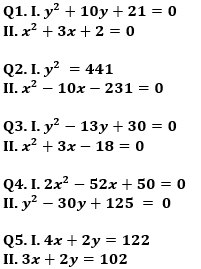
Q6. A compound interest of Rs 184.5 is obtained when Rs (x + 700) is invested at 10% per annum for 1 year, interest being compounded half yearly. Find x?
(a)1800
(b)1100
(c)700
(d)1500
(e)None of these
Q7. If Jasprit Bumrah can bowl 8 different types of balls, then in how many ways he can bowl 6 different types of balls in an over of 6 balls?
(a)28
(b)720
(c)20160
(d) none of these
(e)2160
Q8. Breadth of a rectangle is 3/4th of its length. Area of rectangle is 972 cm². Diameter of a circle is 1 cm less than the length of rectangle. What is the area of circle?
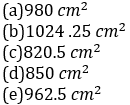
Q9. A alone and B alone can finish a work in 36 days and 30 days respectively. B alone started the work and left after 9 days. Remaining work was completed by A alone. Find number of days taken by A alone to finish the remaining work?
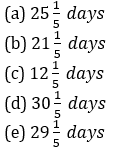
Q10. 47% people like pastries, 58% people like chocolates and 29% people like both pastries and chocolates. What percent of people like neither pastries nor chocolates?
(a)22%
(b)20%
(c)28%
(d)25%
(e)None of these
Directions (11-15): The line graph given below represents the total production of pens and pencils by two companies X and Y in four different years and the table shows the distribution of total pens and total pencils by X and Y over the 4 years.
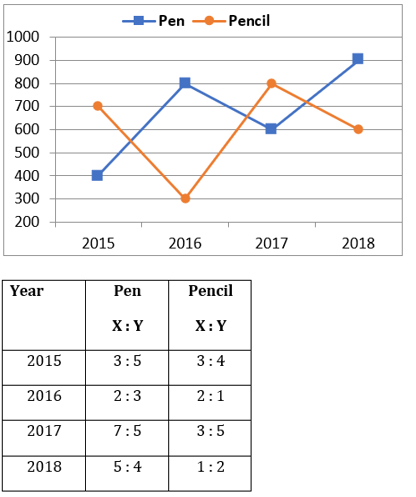
Q11. What is the sum of total pen produced by X in 2016 and 2018 together and total pencil produced by Y in 2015 and 2017 together?
(a) 1720
(b) 1820
(c) 1620
(d) 1520
(e) 2020
Q12. Pens produced by X in 2016 are what percent of pencil produced by Y in 2018?
(a) 50%
(b) 80%
(c) 60%
(d) 75%
(e) 40%
Q13. What is the average number of pens produced by company Y from 2015 to 2018?
(a) 375
(b) 325
(c) 345
(d) 425
(e) 350
Q14.Find the total number of pencils produced by X in the given four years?
(a) 800
(b) 1200
(c) 900
(d) 1000
(e) 600
Q15. What is the difference between total pens produced by company X in 2015 and 2016 together and total pencils produced by Y in 2016 and 2018 together?
(a) 60
(b) 40
(c) 50
(d) 20
(e) 30
Practice More Questions of Quantitative Aptitude for Competitive Exams:
Solutions
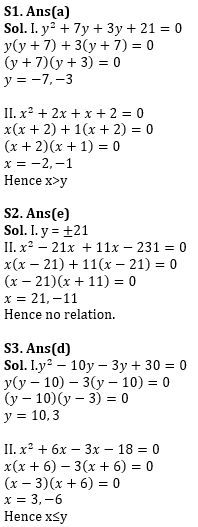
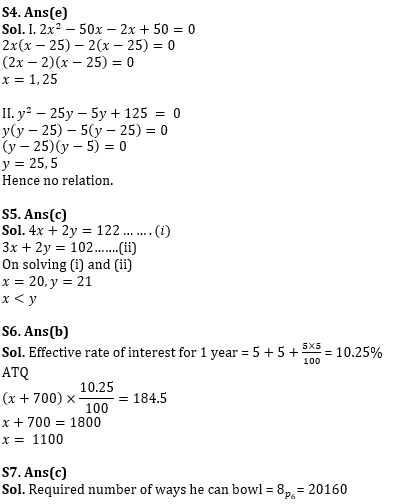
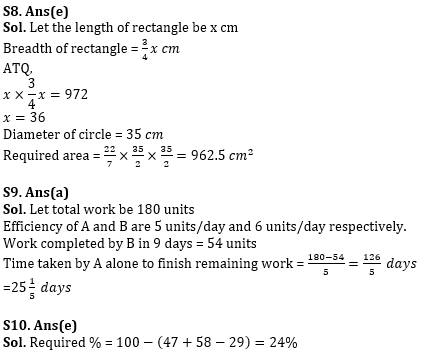
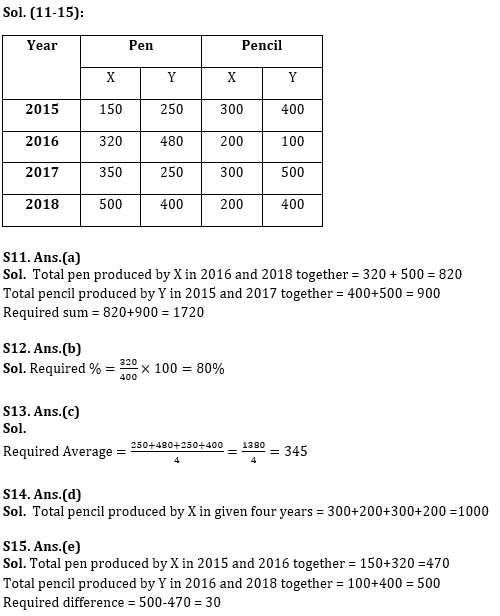
Practice with Crash Course and Online Test Series for IBPS Clerk Prelims 2020:
- Bank Maha Pack (1 Year Validity)
- IBPS Clerk Prime Online Test Series 2020 by Adda247
- Complete IBPS 2020 exams Video Course

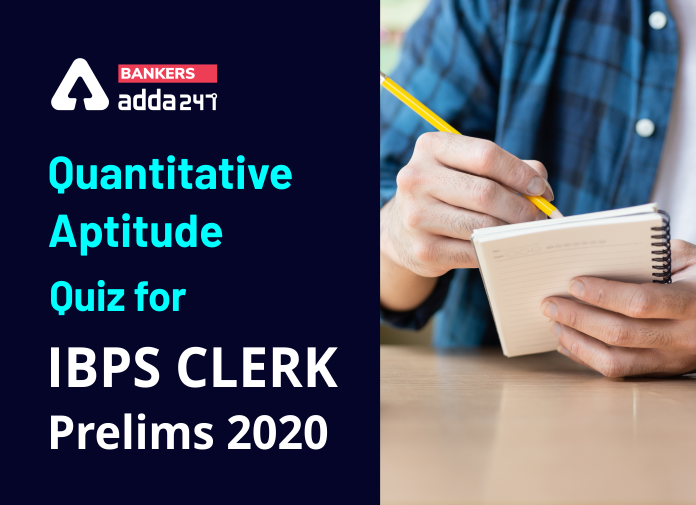

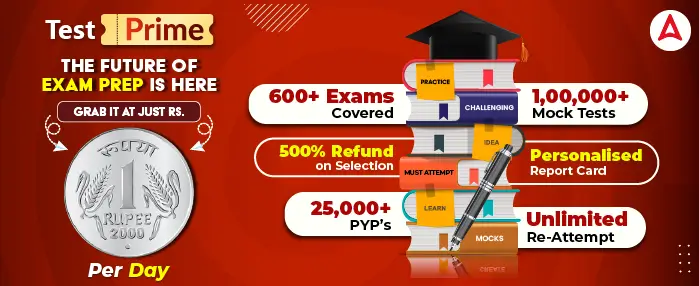
 IBPS PO Mains Score Card 2025 Out at ibp...
IBPS PO Mains Score Card 2025 Out at ibp...
 Bombay High Court Recruitment 2025-26 No...
Bombay High Court Recruitment 2025-26 No...
 IBPS Clerk Syllabus 2026, Subject Wise E...
IBPS Clerk Syllabus 2026, Subject Wise E...


